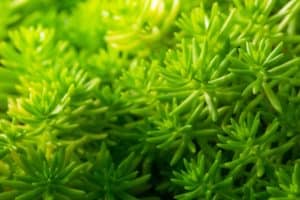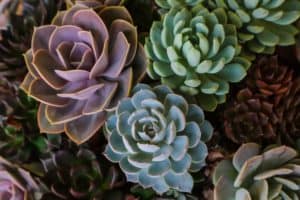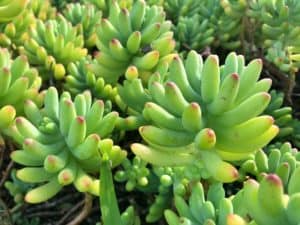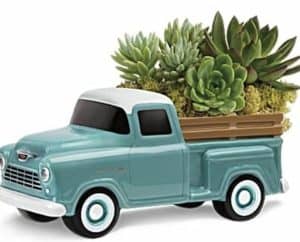Succulents have become one of the most popular houseplant choices because they’re strikingly beautiful, incredibly diverse, and also super easy to care for. They can grow happily in a variety of different containers, making them perfect for just about any home’s decor or style. Some fun planting options include succulent wreaths and wall hangings, hollowed-out corks, eggshells, recycled berry baskets, and pretty ceramic containers. At Adrian Durban Florist, our green thumbs love tending succulents in winter because they’re the perfect way to brighten a dreary winter day in Cincinnati.
How Are Succulents Different from Other Plants?
The unique structures of succulents are primarily what set these alluring plants apart from other greenery. Instead of having thin, vein-lined leaves, succulents sprout thick, rubbery leaves. Looking like something you might expect to find on an alien planet, succulents have a sort of other-worldly beauty, but they are very much of this world. They can be found in lots of different climates and regions. They grow from the ground in arid locations and sprout from the bark of trees in humid rainforests. They have shallow roots that allow them to suck up water quickly during rainfall, and they even bloom with flowers in colors ranging from pinks and reds to oranges, yellows, and white.
Why It’s Great to Grow Succulents Indoors
On display inside, succulents not only look lovely and help to create a calming, positive atmosphere, but they’re also excellent for your indoor environment. Succulents have the power to pull toxins, like VOCs, from the air into the soil, where their roots turn them into nutrients. They also replenish the oxygen in the air you breathe. These succulent superpowers make them a wonderful choice for displaying in an office, baby’s nursery, or anywhere around your home for healthier breathing.
Our Favorite Succulents
Sedums
It’s common to find a variety of sedum succulents in a succulent garden. There are a lot of different types of sedum succulents, and they range from column-shaped plants to rosettes and clusters of stick-shaped leaves. Sedums add wonderful filler in a succulent garden and help create textural variety.

Green Sedum
Echeveria
The leaves of these succulents grow in starburst-shaped arrays. Leaf shapes vary and can include rounded leaves, pointy leaves, and segments with crinkled edges. They also come in a rainbow of different colors including pinks, purples, and a variety of shades of green.

Succulents – Echeveria
Crassula
There’s also great variety regarding color and leaf shapes among the different types of crassula succulents, but the one thing that they all have in common is that they tend to grow in tall columns. Crassula succulents are perfect for adding height to the center of a succulent garden or can also be planted to hang over the edge of a planter.

Succulent – Crassula
How to Take Care of a Succulent
Succulents tend to fare best when they’re given less attention. They don’t need much pruning, and too much water can lead to a succulent’s untimely demise. Give your succulents a warm, sunny location and water them sparingly — especially in the winter. It’s best to allow their soil to dry completely between watering. When you do water, soak the soil thoroughly and then allow it to drain so that the plants never sit in standing water.

Chevy Pickup Keepsake with Succulents
If your succulent’s leaves are turning brown or an unusual shade of yellow, it could indicate either over or under-watering. Check the soil to see which and either back off or give them a drink. If you’d like to learn more about cultivating succulents, we welcome you to contact an expert at Adrian Durban Florist today.


